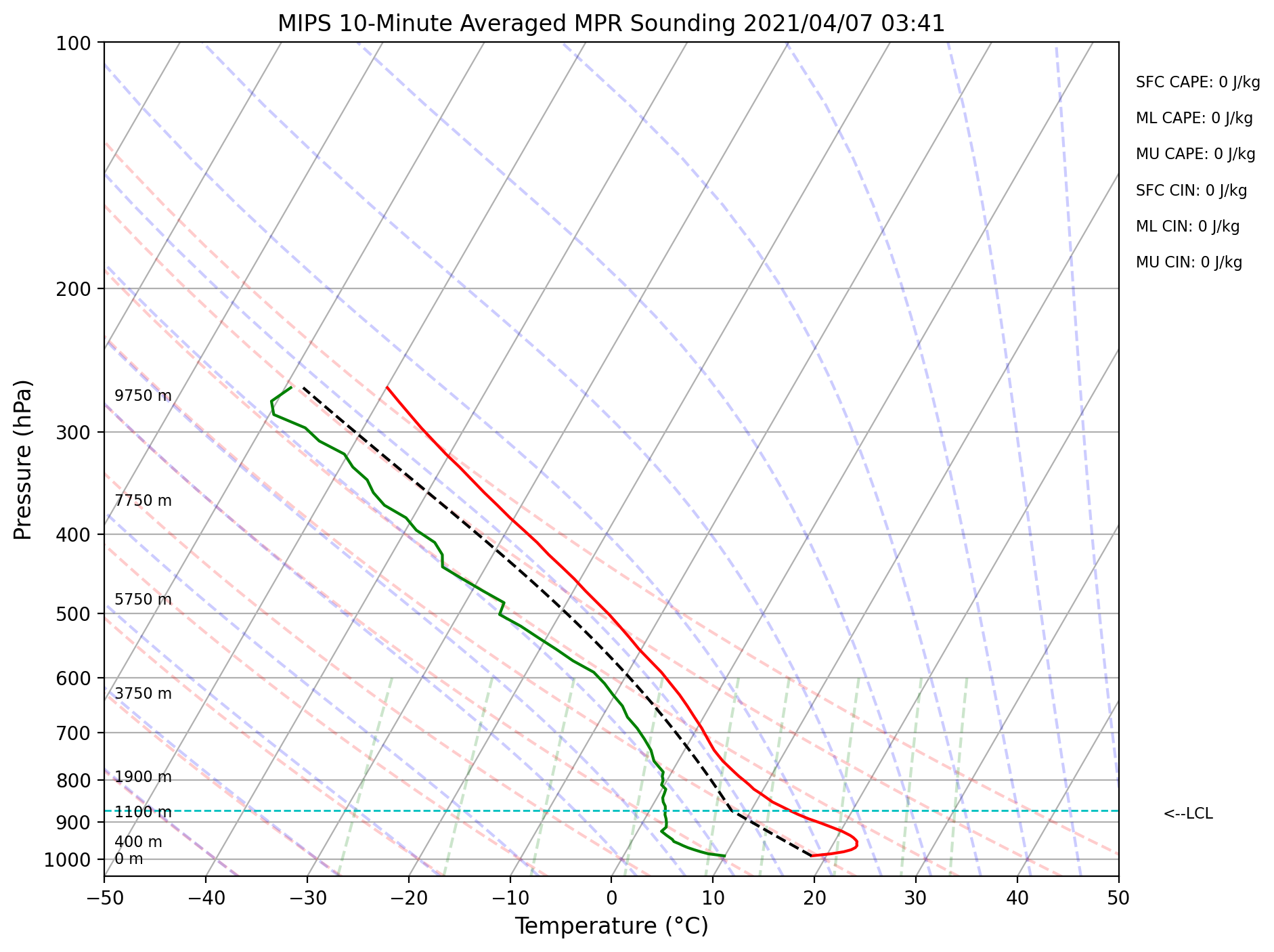|
One of the most common meteorological instruments, radiosondes attached to weather balloons, help meteorologists measure the atmospheric thermodynamics. Useful and widely used, these instruments provide valuable operational and research information. However, weather balloons can be costly and often takes 30 minutes to an hour to capture the thermodynamic profile of the whole troposphere. However, with the 35-channel Microwave Profiling Radiometer (MPR), a thermodynamic profile can be captured in just one minute. The MPR is a passive instrument, meaning it only receives emissions from the atmosphere rather than transmitting and receiving radiation. The MPRs that are used by UAH measures atmospheric emissions on the shoulders of the water vapor (21-30 GHz) and oxygen (51-59 GHZ) bands. Having multiple frequencies within each band allows the MPR to measure the thermodynamics from the surface to higher altitudes. Currently, UAH operates three Radiometrics MP-3000A radiometers - one of MIPS, one on RaDAPS, and one on MoDLS. Each MPR not only senses atmospheric irradiance, but also has a relative humidity, temperature, and pressure sensor mounted on it that allows for in-situ surface measurements, and has an IR temperature sensor that measures cloud base. 
The MIPS 35-Channel MPR |

The MIPS MPR-derived sounding depicting a night-time low-level inversion. 
The MIPS MPR retrievals in totality during the 2017 solar eclipse. |

